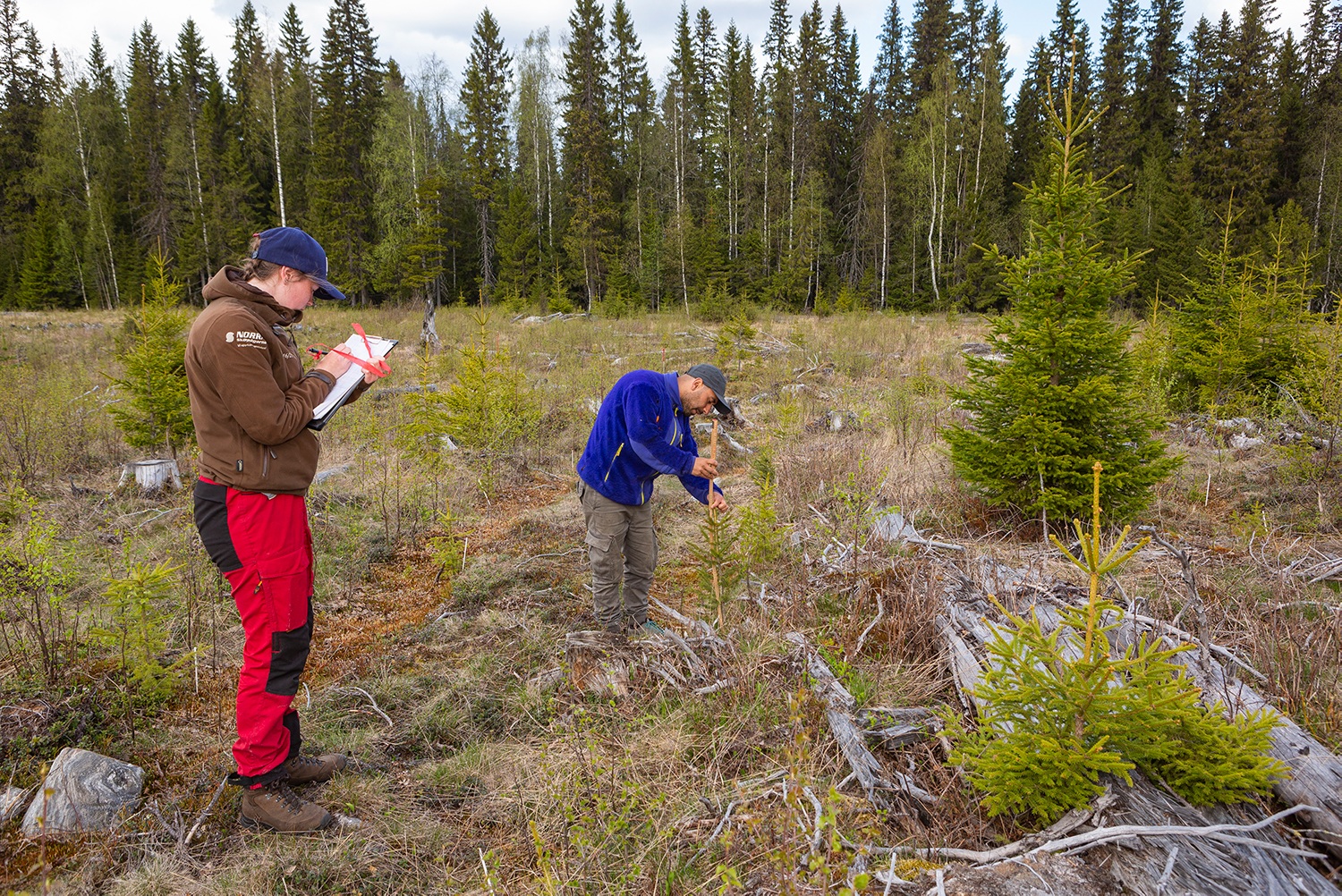
In total, 19 silvicultural trials will be established over a period of two years on forestland of varying fertility. For some trials, many years have passed since the actual felling. The aim is to study the long-term effects of tree species, soil preparation, reforestation method and plant-fertilization.
Recent inventories of young stands in the interior of Norrland have revealed low stem and quality stem numbers per hectare. In particular, many young pine stands show trees severely damaged by, among other things, moose grazing and fungal infections. The so called multi-damaged pine forests means a large loss in future production. In some cases, the stands are so damaged that the best option is to start all over again. This is very costly for landowners and there is no guarantee that the same problems won’t arise again.
Thus, it is important to avoid previous mistakes in silviculture. The experiments will compare several potential establishment alternatives to improve the knowledge of producing young stands.
Two main alternatives will be tested. One based on various measures to accelerate the height growth of the pine plants which would reduce the time they are susceptible to moose grazing. Using an excavator to prepare mounds that allow for group planting is one such example.
The other alternative to be tested is the use of other tree species like Norway spruce, Silver birch, Russian larch (a.k.a. Siberian larch) and Lodgepole pine. Species comparisons in production are either rare or unfavourable. Spruce suffer less from grazing and are not sensitive to the fungal damages that affect pine. To avoid the low production of spruce compared to pine seen on many locations in the interior of Norrland, plant fertilization of spruce will be tested. Birch is relatively untested in the area, while stands with Russian larch often have shown good results in growth but comparisons are lacking. Experimental results and experience regarding site selection and silvicultural methods are very limited for both. Lodgepole pine is relatively common in the area and avoided by game for grazing.
There are extensive trials where the higher long-term production of Lodgepole pine compared to Scots pine is evident, but the wood quality and stability of planted Lodgepole pine on fertile soil may be questionable. Mixed sowing of pine and Lodgepole pine can therefore be a way to increase the probability of having a high production stock with a sufficiently high number of undamaged stem.